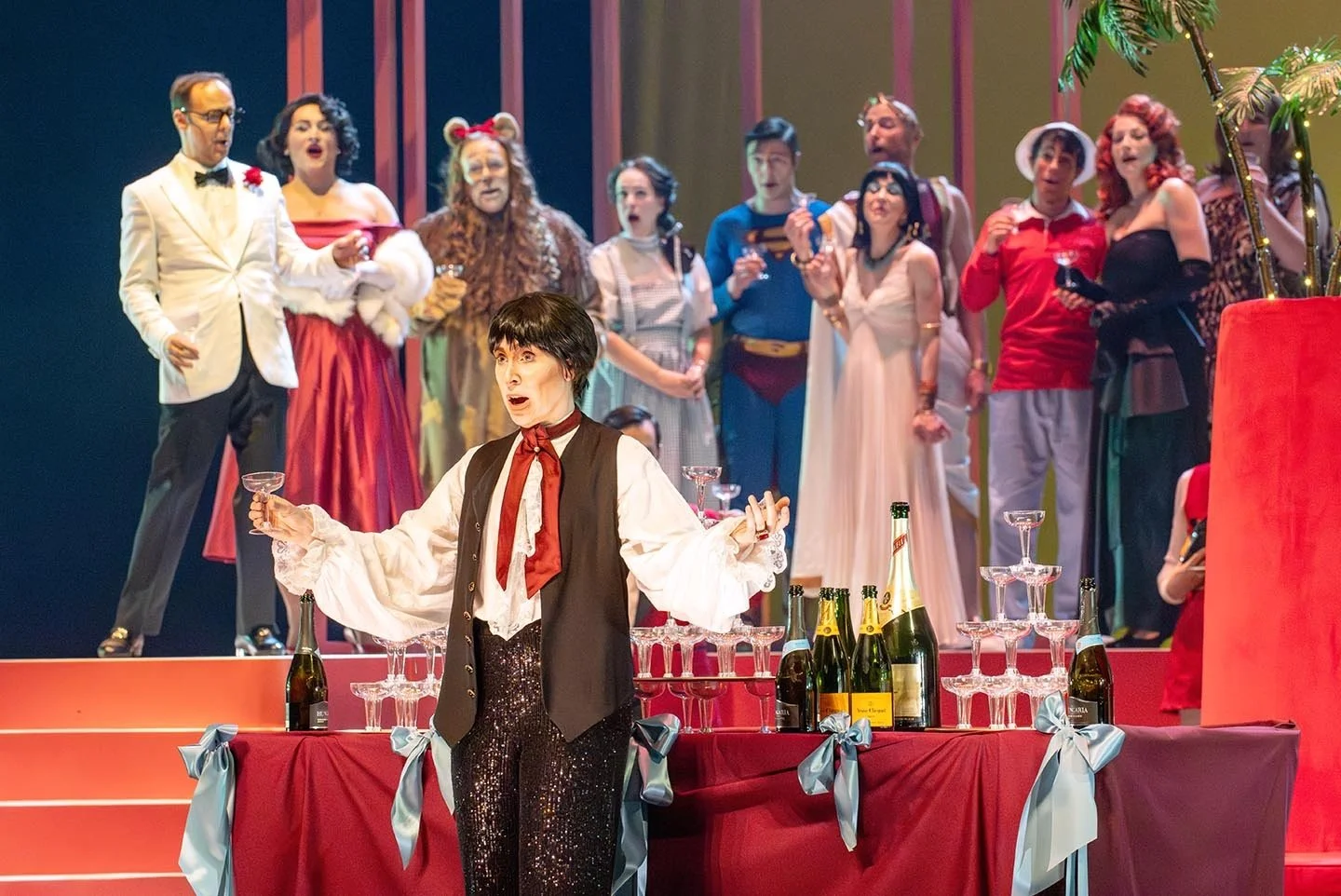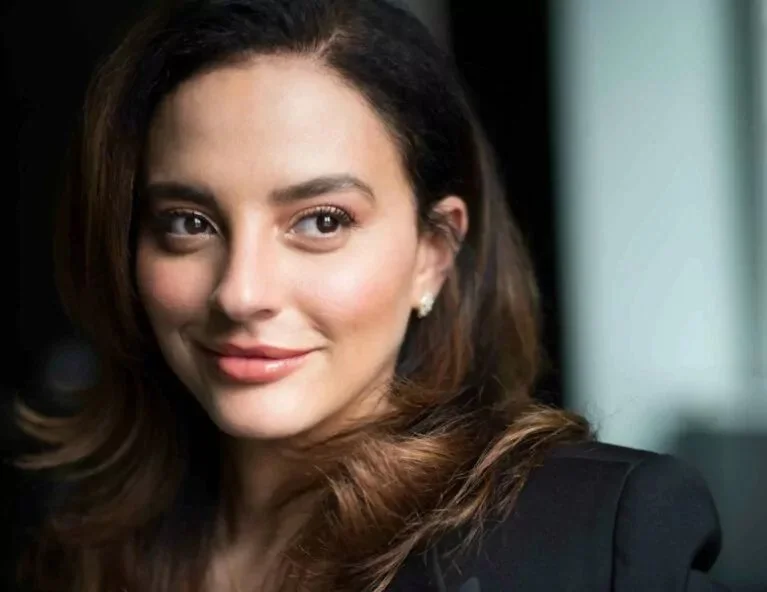Director Ashlie Corcoran takes Vancouver Opera’s Die Fledermaus to the Swinging Sixties
The 65th-season opener features a witty new script by Mark Crawford and a Sweet Charity-worthy array of colourful retro costumes
Die Fledermaus at the Opera de Quebec, whose ’60s costumes are featured in the new Vancouver production. Photo by Emmanuel Burriel
Vancouver Opera presents Die Fledermaus at the Queen Elizabeth Theatre on October 26 and 31 and November 2 and 3
WHAT DO YOU get when you mix a beloved 1874 Johann Strauss II comic operetta with the swinging ’60s?
You get the Vancouver Opera production of Die Fledermaus, director Ashlie Corcoran describing just one number in the show as “a Sweet Charity reference, with a go-go dancing mashup with polka music”. Count us in.
To open its 65th season, Vancouver Opera is infusing the frothy classic—known for its huge chorus, waltzes and polkas, and champagne-swilling party scenes—with vibrant, Laugh-In-, or yes, Sweet Charity-worthy 1960s costumes. Music director Jacques Lacombe conducts the orchestra through Strauss’s effervescent music.
Corcoran, back helming a VO production after last year’s The Magic Flute, says the setting allows her some freedom from the strict class hierarchy of late-19th-century Vienna, the operetta’s original setting. Instead of chambermaids and house servants from that era, “There are popcorn girls-slash-cigarette girls-slash-vodka hosts and hostesses, and then they actually become the entertainment and dance,” explains Corcoran, whose “day job” is helming the Arts Club Theatre Company as artistic director. “And the ’60s neutralizes all of that and creates a space where, in the Act Two party, everyone can be having a great time, no matter if they’re the servant or one of the main guests. They all end up dancing.”
That grooving and go-going comes courtesy of choreographer Shelley Stewart Hunt, working together with Corcoran on a production that features a new dialogue adaptation by Canadian actor-playwright Mark Crawford. The show ends up mixing German sung parts with more 1960s-appropriate English spoken parts.
The performers, including baritone John Chest and soprano Lara Ciekiewicz, are embracing the challenge of flipping back and forth, Corcoran reports of rehearsals. “They’re in this quick-paced English dialogue and then changing gears and launching into German singing. So, yeah, they’re pretty amazing,” she says, adding: “You would think that it would be easier being in English. But I feel in some ways it’s harder, because there’s an opportunity to make it really, really great in the language that we all speak and that our audience speaks—the opportunity to make it so accessible.”
The farcical comedy’s layers of disguise culminate to absurd effect in Act Two’s grand themed costume party, full of guests decked out like characters from 1960s cinema and TV (including a hilarious take on the titular “fledermaus”).
“Usually the main character, Eisenstein, shows up to the party as Marquis Renard. In our version, he’s Eisenstein showing up to the party as Marquis Renard, but he’s also dressed as James Bond,” Corcoran explains. “And Rosalinde, she usually shows up as the Hungarian Countess—but in our version she is also Mrs. Robinson. That gives them lots of room for fun and visual delight.”
Ashlie Corcoran.
At its heart, Die Fledermaus is partially a revenge story, as Dr. Falke retaliates against Eisenstein, who has arrived in Vienna to party with his wife Rosalinde. But Corcoran and her team have focused on making sure the plot’s come-uppance doesn’t become mean-spirited, as it’s sometimes portrayed in the finale.
“It’s about how wonderful and lovely and absurd and ridiculous and beautiful all of us are,” she says. “And this comes from Mark Crawford’s beautiful brain: laughing at our own foibles and the generosity given to each other and the delight of good-natured teasing. Loving our friends through thick and thin, through practical jokes, and really just enjoying the complexity that it is to be human.”
Amid all that raucous, good-spirited fun, Die Fledermaus must flow as easily as bubbly champagne. In other words, what Corcoran and her team make look light and easy is actually incredibly difficult—especially with the size of the chorus in the production, not to mention the way it moves from ’60s go-go to the twist.
Says Corcoran: “It’s like throwing a great party, right? You’ve got to get all the pieces in place, and then everyone can have a great time.” ![]()

























